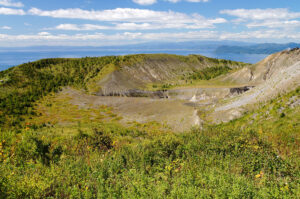Overview (history, characteristics, attractions)
Nirayama Reverberatory Furnace is the remains of a reverberatory furnace built at the end of the Edo period in Izunokuni City, Shizuoka Prefecture. It was built by order of the shogunate as the country's isolationist policy was wavering at the end of the Edo period and there was a need to introduce Western-style cannon casting technology. It is highly regarded as one of the best-preserved reverberatory furnaces still standing in Japan, with its structure still clearly visible, and in 2015 it was registered as a UNESCO World Heritage Site as part of the "Sites of Japan's Meiji Industrial Revolution."
The stone furnace, which is several meters high, is a valuable historical site that concretely conveys the history of civil engineering and fireproofing techniques of the time and the introduction of Western technology, and by touring the factory and remains you can get a real sense of the technological changes that took place from the end of the Edo period to the Meiji period. The surrounding area has been developed into a park, and another attractive feature is that you can visit the site and enjoy the changing scenery throughout the seasons.
Highlights
- The state of preservation of the reverberatory furnace itself: You can observe the stone and brick structure up close. You can clearly see the technical features such as the furnace shape and flue.
- Interpretive panels and exhibits: Information boards and exhibits explaining the workings of the reverberatory furnace, the background to its construction, and the casting process (if there is an adjacent museum).
- Surrounding historic sites and scenery: A combination of civil engineering techniques from the late Edo period and the local landscape. You can enjoy seasonal scenery such as cherry blossoms in spring and autumn leaves in autumn.
- Photo spot: The historic site's powerful presence makes it ideal for photography, and capturing the details of the ruins will give you a photo that conveys the weight of history.
Access (nearest station, transportation, etc.)
- Railroad (public transportation):
- Nearest station: Izu Hakone Railway (Izu Hakone Railway Sunzu Line), get off at Nirayama Station, then walk for about 15-20 minutes (distance: about 1.2 km).
- If using JR/Shinkansen: Transfer to the Izu Hakone Railway from JR Mishima Station and head to Nirayama Station. (The ride from Mishima Station is short, about 20-30 minutes including transfers.)
- bus:
- Depending on the season and day of the week, local buses operate from Mishima Station and other locations. Please check the schedule in advance.
- car:
- Accessible from the Tomei Expressway and Shin-Tomei Expressway interchanges. The route towards Izu takes about 30 minutes to an hour (depending on the starting point). There are parking lots around the area (both paid and free), but the number of spaces may be limited.
- Note: Public transport has limited service at certain times, especially in the evenings and on holidays. Please check the timetable in advance.
Estimated stay (estimated time required)
- Tour of the reverberatory furnace itself: Approximately 30 minutes to 1 hour
- If you include the museum and a stroll around the area: 1 to 2 hours
- Combining with nearby historical sites and hot springs: Half a day to a full day
Nearby spots
- Egawa Family Residence (Nirayama Historical Residence) — A facility that conveys the history of the area and life from the Edo period to the end of the Edo period (tours are sometimes available).
- Izunagaoka Onsen (Izunokuni City) — Convenient for sightseeing and overnight stays. Combine a visit to the reverberatory furnace with a soak in the hot springs.
- Izunokuni Panorama Park (Ropeway) — A tourist spot where you can enjoy the scenery (seasonal views are attractive).
- Shuzenji/Shuzenji Onsen (approximately 20-30 minutes by car) — Enjoy a stroll through the old town and hot springs.
Things to be aware of (crowds, manners, seasonal precautions, etc.)
- Crowds: It gets crowded on weekends, consecutive holidays, and tourist seasons (cherry blossom and autumn foliage season, summer vacation, etc.). We recommend visiting early in the morning if possible.
- Admission fees and opening hours: Historic sites themselves are often free to visit, but adjacent museums and exhibition rooms may charge a fee and may be closed on certain days. Please check the official website or local guide in advance.
- Safety and Manners: As the site is under preservation, there are restricted areas and fences. Touching or climbing on the remains is prohibited. Be sure to take your trash with you and be considerate of the local residents.
- Walking environment: The grounds may have cobblestones, unpaved areas, steps, and slopes. Please wear comfortable walking shoes. Some areas may not be barrier-free.
- Weather and Seasonal Precautions: As the tour will be mostly outdoors, please bring rain gear and sun protection. In winter, it can be windy and cold.
- Parking and Transportation: Parking spaces are limited and may be full during peak hours. Please consider combining with public transportation.
Finally, before you visit, be sure to check the official websites (or tourist information) of Izunokuni City and Nirayama Reverberatory Furnaces for the latest opening hours and transportation information. Please enjoy these historical remains while cherishing them.



